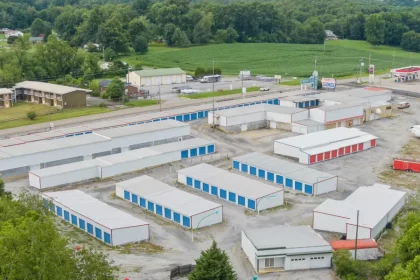In the rapidly evolving world of software development, DevOps practices have become pivotal for enhancing collaboration, streamlining processes, and accelerating delivery. However, achieving comprehensive observability while maintaining robust security remains a significant challenge. Pratik Thantharate, the visionary mind behind the novel Smart Monitoring System, aims to revolutionize this domain by harnessing the power of artificial intelligence (AI) for intelligent monitoring and delivering actionable insights. In this insightful interview, Thantharate offers a deep dive into the cutting-edge fusion of AI, observability, and security within DevOps environments, unveiling his pioneering invention’s transformative potential.
Welcome, Pratik! With your extensive background in Agile Software Development, Cybersecurity, and DevOps, as well as your dual M.S. from US universities, you’ve made significant contributions to the field. We’re excited to learn more about your pioneering work in DevOps. Could you please share the inspiration behind developing the Smart Monitoring System and how it relates to your research interests?
Thank you for having me. The inspiration behind developing the Smart Monitoring System was realizing the gap in current DevOps practices, especially in monitoring, observability, and security. With my experience in designing robust frameworks and my research interests in Agile software development, DevOps, and end-to-end code-to-cloud security, I recognized the need for a system that not only monitors but also provides actionable insights for rapid and reliable software delivery. One of my key research works, “IntelligentMonitor,” laid the foundation for the Smart Monitoring System. This research proposed an innovative approach to improve monitoring and observability in DevOps environments by leveraging real-time data collection, intelligent analytics, and automated anomaly detection powered by advanced technologies such as machine learning and artificial intelligence.
That’s fascinating! Could you elaborate on how your Smart Monitoring System stands out in addressing the unique challenges DevOps environments face today?
Absolutely. Our system is designed to tackle several critical challenges head-on. First, it offers a high-performance data ingestion framework that allows for customizable integration with a wide range of DevOps tools. This ensures real-time observability and actionable insights. Second, the system employs an innovative hybrid analytics engine that combines statistical modeling, algorithmic heuristics, and both supervised and unsupervised machine learning techniques. This enables us to provide comprehensive visibility, from macro KPI dashboards to precise issue identification.
Security and efficiency are paramount in DevOps. How does your invention and your research work on “GeneticSecOps” enhance security practices within DevOps environments?
You’re absolutely right; security is a core aspect of our design. In addition to the advanced security mechanisms built into the Smart Monitoring System, my research work on “GeneticSecOps” has further strengthened our approach to security testing and vulnerability detection within the DevSecOps framework.
“GeneticSecOps” addresses the need for automated tools to streamline and enhance security practices. It offers two main components: an automated security testing tool for rigorous testing throughout the software development lifecycle and an automated vulnerability detection tool that identifies potential vulnerabilities in system logs and network traffic. To optimize feature selection in the vulnerability detection tool, we employ a Genetic Algorithm, which efficiently explores potential feature combinations to maximize vulnerability detection accuracy while minimizing the number of features.
By integrating the findings from “GeneticSecOps” into our Smart Monitoring System, we can automate security testing and vulnerability detection, enhancing the security and reliability of software development within DevOps environments. Additionally, its cloud-native, containerized microservices architecture not only ensures resilience and portability but also optimizes resource usage across environments. This architecture facilitates rapid innovation cycles and seamless CI/CD integration, significantly enhancing operational efficiency and system security.
AI plays a crucial role in modern technological solutions. Can you elaborate on how AI is integrated into your Smart Monitoring System?
AI is at the heart of our system. The analytics engine utilizes AI to process data through various machine-learning algorithms. This enables descriptive and diagnostic analytics and allows for predictive and prescriptive analytics. By leveraging AI, our system can anticipate potential issues and offer preemptive optimizations, thus ensuring enhanced system performance and reliability.
The application of your system seems vast. Can you share some specific use cases where your Smart Monitoring System can make a significant impact?
Absolutely. One compelling use case is continuous integration and delivery (CI/CD) pipelines. Our system can detect and predict anomalies in real-time, allowing teams to address issues before they affect the deployment cycle preemptively. Another use case involves infrastructure monitoring, where our system’s predictive analytics can forecast potential system failures, enabling proactive maintenance and thus minimizing downtime. These capabilities are crucial for maintaining high availability and performance in cloud-native architectures and microservices, ensuring businesses can operate efficiently and reliably.
My goal extends beyond automating and optimizing DevOps environments; we strive to contribute positively to society and the broader ecosystem. By enhancing software reliability, reducing downtime, and fortifying security, our system can help ensure the seamless delivery of critical services and applications that people rely on daily. This includes sectors like healthcare, finance, and infrastructure, where system failures or security breaches can have severe consequences.
Collaboration is key in DevOps environments. How does your system facilitate better collaboration among development, operations, and security teams?
Our system is built with collaboration at its core. By offering a seamless integration fabric, it enables bidirectional data flows with external tools, automating workflows, and enhancing operational efficiency across teams. For example, the automated ticketing feature and the ability to correlate monitoring alerts with code commits and system topologies empower development and operations teams to work more closely on issue resolution. Furthermore, by incorporating security information and event management (SIEM) solutions, we ensure that security teams are also integrated into the DevOps process, promoting a DevSecOps culture. This holistic approach not only streamlines workflows but also fosters a culture of continuous learning and improvement among all stakeholders involved.
Looking ahead, how do you see your invention evolving with the rapidly changing landscape of DevOps and AI?
We designed the Smart Monitoring System with future growth and adaptability in mind. As DevOps tools and technologies continue to evolve, so will our system. We plan to incorporate further advancements in AI and machine learning integration, not only for monitoring and observability but also for enhancing security measures.
One area I’m particularly excited about is the integration of advanced AI techniques for threat detection and mitigation. By leveraging AI and machine learning algorithms, our system could proactively identify potential security vulnerabilities, predict cyber threats, and even recommend remedial actions, strengthening the overall security posture of DevOps environments.
Moreover, by fostering a culture of continuous learning and collaboration within DevOps teams, our system promotes knowledge-sharing and skill development, benefiting the industry and nurturing a more innovative and resilient workforce. I strive to transcend traditional monitoring paradigms and set new standards for operational excellence, with a robust emphasis on end-to-end security across the entire DevOps lifecycle, ultimately contributing to a more secure and efficient digital ecosystem.
Angela Scott-Briggs: Thank you for sharing these invaluable insights. Your work on the Smart Monitoring System, backed by your groundbreaking research on “IntelligentMonitor” and “GeneticSecOps,” promises to revolutionize DevOps practices through enhanced visibility, predictive analytics, and a commitment to continuous improvement and security. We look forward to seeing its impact on the industry.








